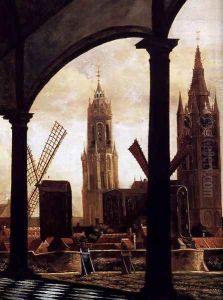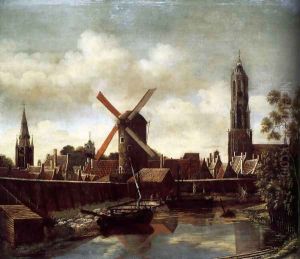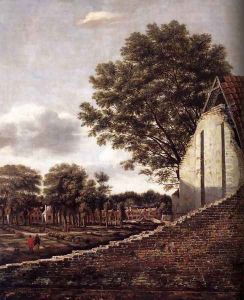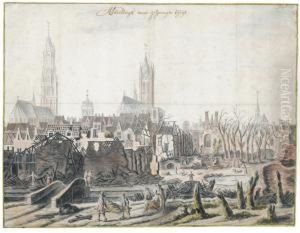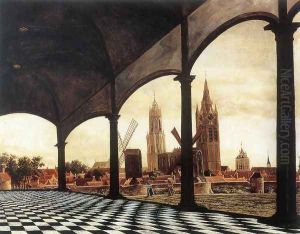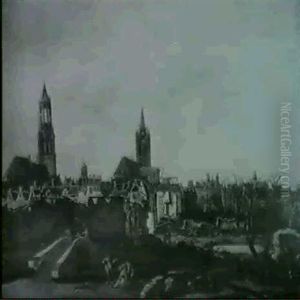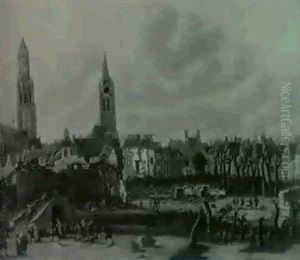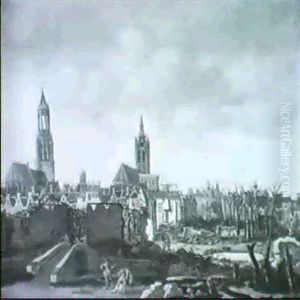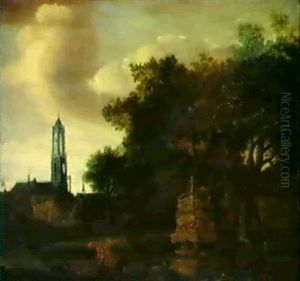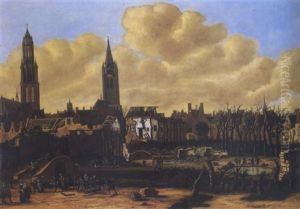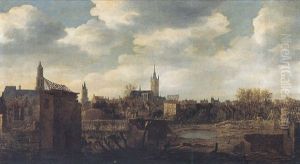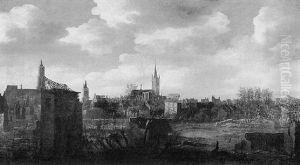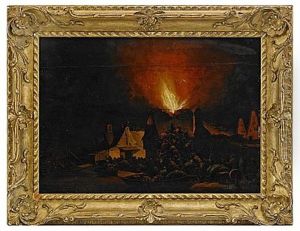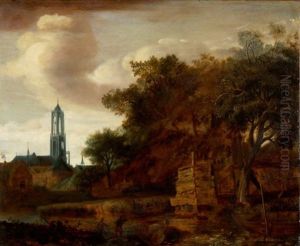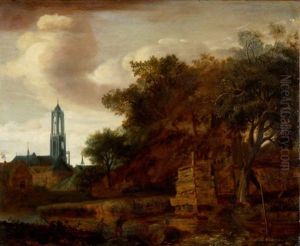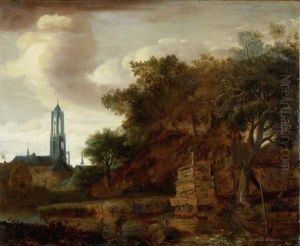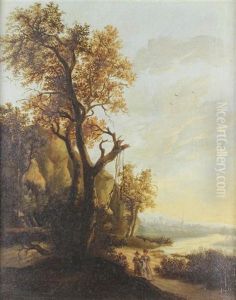Daniel Vosmaer Paintings
Daniel Vosmaer, also spelled Vosmeer or Vosmaar, was a Dutch Golden Age painter who was born in Delft, the Netherlands, in 1622. He belonged to a family of artists, with his father being the painter Simon Vosmaer. Although there is limited information about Daniel's early life and training, it is known that he came from a background that was steeped in artistic tradition, which likely had a significant influence on his development as a painter.
Daniel Vosmaer specialized in landscape paintings, particularly Italianate landscapes, which were a popular genre in the 17th century among Dutch artists. These landscapes were characterized by their idealized depictions of the Italian countryside, often including classical ruins and bathed in a warm, Mediterranean light. Vosmaer's work exhibits a meticulous attention to detail and a harmonious use of color, which contribute to the serene and poetic quality of his landscapes. His paintings often display a masterful use of perspective, leading the viewer's eye into the depth of the scene.
Vosmaer's career unfolded during a period of great prosperity and cultural achievement in the Netherlands, known as the Dutch Golden Age. This era was marked by a flourishing of the arts, driven by a burgeoning middle class with an appetite for art and the means to support it. Within this context, Vosmaer was able to establish himself as a skilled landscape painter, although he did not achieve the same level of fame as some of his contemporaries like Jacob van Ruisdael or Meindert Hobbema.
The artist's life was relatively short, as he died in 1666 at the age of 44. Despite his early death, Vosmaer left behind a body of work that contributes to our understanding of Dutch landscape painting in the 17th century. His paintings are appreciated for their peaceful and idyllic qualities, and they continue to be studied and admired for their artistic merit. Works by Daniel Vosmaer are held in various art collections, including museums and private collections in the Netherlands and beyond. His contributions to the Dutch landscape genre have ensured him a modest but enduring place in the history of art.
